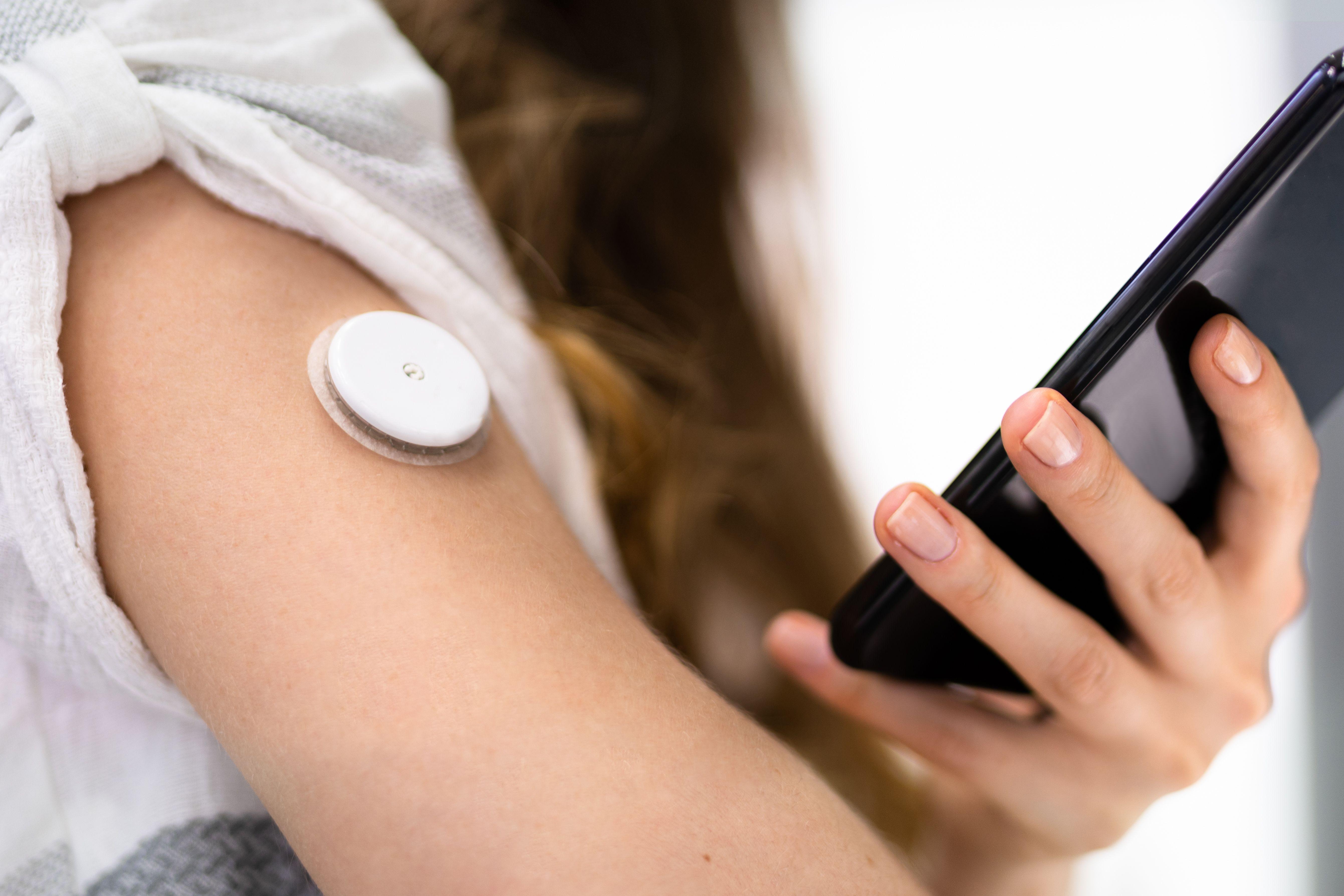📚 Unlock the World of AI and Humanity with These Two Free Books! 🚀
Dive into the thrilling realms of artificial intelligence and humanity with "The ECHO Conundrum" and "Awakening: Machines Dream of Being Human". These thought-provoking novels are FREE this week! Don't miss the chance to explore stories that challenge the boundaries of technology and what it means to be human.
Read More & Download
Continuous glucose monitoring (CGM) technology has revolutionized diabetes care, offering patients a more convenient and insightful way to manage their blood glucose levels. However, the increasing use of these devices raises concerns about their environmental footprint. This article examines the potential environmental impacts of CGM devices, from production and resource consumption to disposal, and explores how pharmacists can contribute to more sustainable practices.
 A woman wearing a continuous glucose monitor on her arm.
A woman wearing a continuous glucose monitor on her arm.
The CGM Lifecycle and its Environmental Costs
Each stage of a CGM’s battery lifecycle presents potential environmental challenges. The production process, the resources used, and the eventual disposal all contribute to the device’s carbon footprint. A recent analysis published in the Journal of Diabetes and Science Technology, using data from the International Energy Agency (IEA), highlights these concerns.
Battery Production: A Closer Look
Two primary battery systems power most CGMs: zinc-silver oxide (used in Freestyle Libre sensors and Omnipod pumps) and lithium metal-manganese dioxide (used in Dexcom sensors). The extraction of both lithium and silver carries significant environmental risks.
Lithium mining, for example, is water-intensive, consuming approximately 1900 tons of water per ton of lithium extracted. This can deplete local water resources, impacting surrounding ecosystems. Silver extraction often involves the use of corrosive chemicals like cyanides and ferricyanides, which pose contamination risks to water and soil. Historical incidents, such as a major spill that affected Hungary, Romania, and Yugoslavia, demonstrate the devastating consequences of such contamination.
CGM Disposal: Navigating the Challenges
The improper disposal of CGM batteries adds another layer of complexity. Incinerating zinc-silver dioxide batteries can release harmful gasses, posing health risks. When disposed of in landfills, heavy metals like silver can leach into groundwater, contaminating valuable water resources. Lithium-manganese dioxide batteries are particularly problematic due to their reactivity with air and water, creating a fire hazard if not handled correctly.
📚 Unlock the World of AI and Humanity with These Two Free Books! 🚀
Dive into the thrilling realms of artificial intelligence and humanity with "The ECHO Conundrum" and "Awakening: Machines Dream of Being Human". These thought-provoking novels are FREE this week! Don't miss the chance to explore stories that challenge the boundaries of technology and what it means to be human.
Read More & Download
The Pharmacist’s Role in Promoting Sustainable CGM Use
Pharmacists are uniquely positioned to educate patients and advocate for more environmentally conscious practices surrounding CGM use. Here’s how they can make a difference:
Promoting Take-Back Programs
Pharmacists can inform patients about sensor kit and pod take-back programs. These programs ensure that used devices are sent to specialized waste-to-energy facilities, diverting them from landfills. Abbott’s Freestyle program is one example of such an initiative.
Recommending Rechargeable Devices
Pharmacists can encourage the use of CGMs with rechargeable batteries, reducing the reliance on single-use primary batteries. The Medtronic Guardian transmitter, for instance, requires only weekly charging and has a battery lifespan of approximately one year.
Exploring Reusable Smart Insulin Pens
For patients using multiple daily injections, reusable smart insulin pens offer a sustainable alternative. The NovoPen by Novo Nordisk, for example, features a lithium battery that lasts for several years.
A Call for Continued Progress
While CGM technology represents a significant advancement in diabetes management, addressing the environmental impact of these devices is crucial for long-term sustainability. By actively promoting responsible disposal practices and advocating for eco-friendly alternatives, pharmacists can play a key role in minimizing the environmental burden associated with CGM technology. For personalized treatment plans and further guidance on sustainable CGM practices, consult with a healthcare professional.
📚 Unlock the World of AI and Humanity with These Two Free Books! 🚀
Dive into the thrilling realms of artificial intelligence and humanity with "The ECHO Conundrum" and "Awakening: Machines Dream of Being Human". These thought-provoking novels are FREE this week! Don't miss the chance to explore stories that challenge the boundaries of technology and what it means to be human.
Read More & Download
